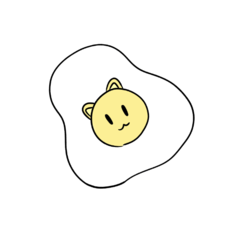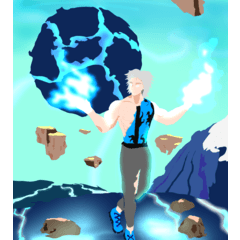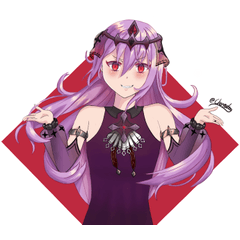Mastering Hands
Hands can be hard to draw and pose, but avoiding drawing hands forever is not a solution.
This tutorial will cover everything about drawing hands, from the basics, movements, types of hands to how to pose and how to draw various hand poses.
There’s a video version, too!
Basics
Fingers are arranged in a slight curve, not straight.
The length of the middle finger is equal the length of the palm.
And, the little finger side of the palm is curved while the thumb side fairly straight.
Based on those facts, we can assume that the palm can be simplified into a polygon.
The little finger’s length is approximately two third of ring finger.
The tip of the thumb is halfway the bottom phalanx of the index finger and its base knuckle is halfway the palm.
Thumb and little finger are about the same length.
To add more realism, the shape of the phalanges are curved inward, making the knuckle parts more prominent. It’s a tiny detail that not everybody use, though might be useful if you’re drawing thin hands.
The fingers seem to look longer when seen from behind, this is because the border of the palm is higher than the base knuckle.
If you look at the back of your hand and spread the fingers open, you can see the border of the palm between the fingers. It looks like thin skin. Quite similar to what we can find on a duck’s foot.
There are muscles that connects the knuckles to the wrist. The muscles that connected the three fingers in the middle are close to each other while the thumb and little finger ones further away.
The nails are U shaped. It also curved a bit when seen from the tip of the finger.
Some artists prefer to draw only the top half of the nail. It doesn’t work for painted nails though. Some forgo drawing the nails at all.
When bending the fingers, the inner part would be puffy, while the outer part blocky.
For determining a character’s hand size, the easiest way is to use the head as a guide.
The size of a hand is roughly equal the distance of chin to mid forehead.
This method works for all demographic.
Varieties
Female and male hands after puberty have obvious differences. In general, male hands are bigger with wider and longer fingers compared to female hands. Male bones are thicker and rougher too, making men’s fingers look thicker and blockier.
Before puberty, there’s no hand size differences between boys and girls. If there’s any, it’s not significant enough.
That’s why, children’s hands are drawn in a different way.
Using a circle unit based on the width of the finger measured on the middle finger, children’s fingers have less unit the younger they are and adult’s have more. This caused children’s hands to look proportionally wider the younger they are compared to adult hands.
Elderly hands are different from adults. Although the proportions are the same, the skin of elderly hands are less elastic and wrinkly. This also leads to more visible bones and veins.
The easiest way to draw an elderly hand is to draw the wrinkles at the joints and between the fingers.
Fat percentage also plays a role. As you can see in this picture.
The lower the fat percentage, the more visible the bones would be. Remember the shape of finger bones in the last section? Because there’s less fat, the shape of the finger would follow the bones closely, making the knuckles look bigger than usual.
The higher the fat percentage, the chubbier the hands and fingers. The palm lines would be less visible.
At some point, the skin would look like it’s sinking at the joints because there’s less fat around them than the rest of the hands. The gap between the fingers would become smaller too.
Baby hands contain a lot of fat. So, draw it plump, with the “shorter” proportion in mind.
Movements
Aside from knuckle joints that can move 90 degrees inward, when talking about the hand movements in general, we should pay attention to the palm, too.
There are three big movable parts of the palm. One of them is the part connected to the thumb and the other is the top part of the palm.
Both can move about 90 degrees inward.
The last one is the one below the little finger.
The movement range is a bit limited compared to the other two.
Pose
One of the most common way is to group the middle finger and ring finger together.
Other than that is to divide the four fingers into two pairs. Index finger and middle finger, ring finger and little finger.
The last one is to group three fingers aside from the index finger OR the little finger.
These are the sample poses.
To show force, bend the joints more.
Also, fingers naturally curl when relaxed. Since it’s hand’s natural state, it might be a pose you want to master.
Drawing Hands
Start with the palm, followed by the finger part.
I draw the general shape of the four fingers as if the hand was covered by a mitt and the thumb with a bend line.
Based on the mitt, draw a line for each fingers. The lines represent the finger itself and will be the middle part of the finger, not the borders.
Then, sketch the hand. To make sure the knuckles are obvious, I separated each finger into three parts. Fix any wrong proportions while at it.
Draw the clean line art. Add details like nails, palm lines if you wish. And, it’s done!
Add wrinkles in certain parts and deepen the creases to make the hands look elderly.
That’s it about hands! I hope you find the tutorial helpful.
I’ll see you next time!
























Kommentar